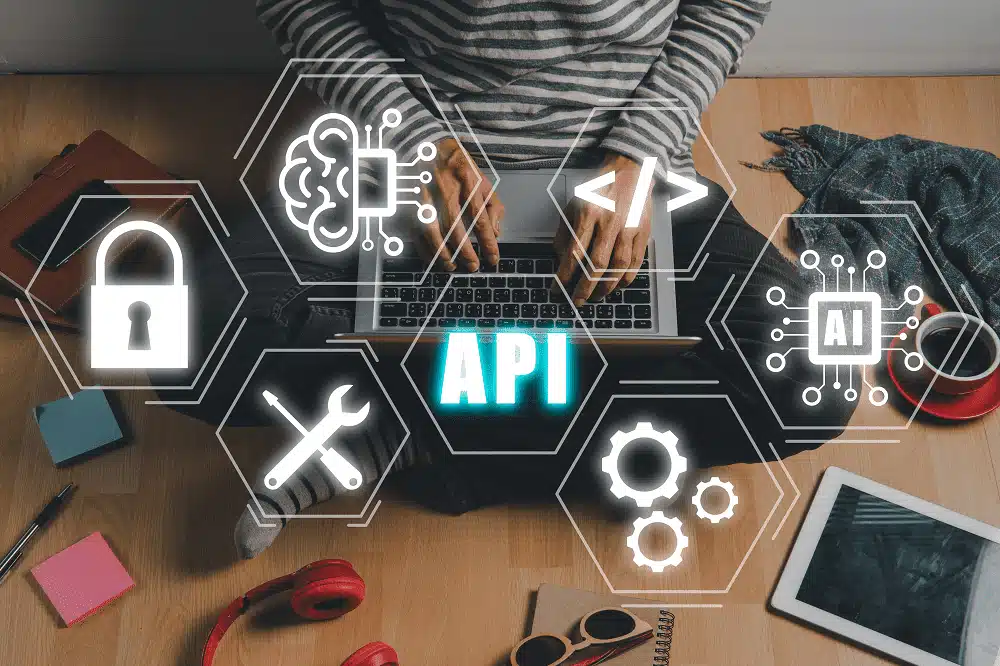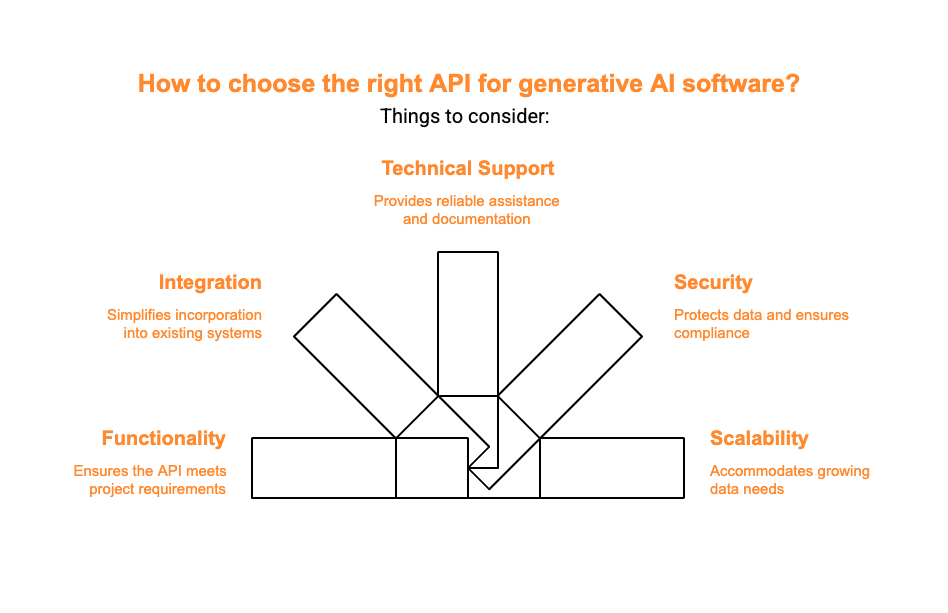How to Stay Ahead of the Game in 2025: The Benefits of Using an API for Generative AI Software

Generative AI software is revolutionizing the way companies and individuals create content. One of the best ways to access this technology is through an API. In this post, we will discuss the benefits of using an API for generative AI software and how it can help developers stay ahead of the game.
What is an API?
An API, or application programming interface, is a set of rules, protocols, and tools for building software and applications. It acts as an intermediary between different software systems, allowing them to communicate with each other. APIs define how different software components should interact, including how requests for information and services are made, and how data is exchanged. They are also used to allow third-party developers to access the functionality and data of a particular system.
The benefits of using an API for generative AI software
APIs have become essential tools for developers looking to access the latest technologies and stay ahead of the curve. By using an API for generative AI software, developers can access powerful technology that can improve their projects’ efficiency, flexibility, and scalability.
Increased Efficiency and Flexibility
By using an API, developers can automate the creative process, saving valuable time and resources. This can be particularly useful for projects involving large datasets. With the API, developers can access the capabilities of the generative AI software and integrate it into their own projects with minimal effort. With access to an API, developers have the ability to customize the way content is created.
New Monetization Opportunities
As the importance of video content continues to grow, there is a growing demand for technology that makes it easy to create high-quality videos. By incorporating generative AI technology into their own projects, developers can create new revenue streams and meet the demands of their customers. For example, using the D-ID API, a developer can create a product or service that allows businesses to easily create personalized and engaging videos, which they can then monetize through subscriptions or on-demand services.
Stay Ahead of the Curve
The use of an API for generative AI software enables developers to stay ahead of the curve by providing access to the latest generative AI tools. This can help developers create content that is personalized, cost-effective and engaging. This can be beneficial for businesses looking to stay ahead of the competition, by providing innovative and engaging content to their customers. Furthermore, the ability to access new and advanced AI technology, can help in the creation of new products or services and thus can help in exploring new business opportunities.
How to choose the right API for generative AI software

When it comes to choosing the right API for generative AI software, there are a few things to consider.
- Functionality: Make sure that the API provides the functionality you need for your project.
- Integration: Look for an API that can be easily integrated into your existing systems and workflows, to minimize disruptions to your development process.
- Technical Support: Choose an API that has a robust documentation and support system, so you can quickly get answers to any questions you may have.
- Security: Check that the API has proper security measures in place to protect your data and ensure compliance with relevant regulations.
- Scalability: Choose an API that can accommodate large amounts of data and scale with your growing needs.
By considering these factors and doing research on different options available, you can ensure that you choose the right API for generative AI software that meets the specific needs of your project.
What to Expect from Generative AI APIs in 2025
As we head deeper into 2025, generative AI APIs are evolving rapidly, shaped by speed, flexibility, and personalization demands. Modern developers and product teams are no longer just asking whether a generative AI API can create content—they’re looking for platforms that enable seamless AI API integration, scalable deployment, and support for complex, multimodal outputs.
One major trend is the rise of multimodal generative AI APIs. These interfaces combine text, image, video, and audio generation capabilities in a single pipeline. Rather than stitching together multiple tools, developers can now call one endpoint to generate a talking avatar video, complete with voice and branded visuals, using just a prompt. This convergence is changing how AI content generation APIs are used across marketing, customer service, and product development.
Personalization at scale is another key advancement. APIs in 2025 allow for deeper integration with user data, CRMs, and analytics systems, enabling highly tailored video or image content for specific user segments. For example, D-ID’s API can dynamically generate personalized explainer videos, where the content and tone shift depending on user behavior or location—making every output feel human and intentional.
Enterprises, in particular, are leaning into API-first architectures. This means their systems are being designed from the ground up to incorporate AI through modular, flexible interfaces. By using enterprise AI tools built on robust APIs, companies can innovate faster, experiment more freely, and reduce time to market. Whether it’s onboarding flows, internal training content, or large-scale communications, these AI-powered systems are deployed through code-first integrations, not cumbersome UI workflows.
In addition, integration with large language models (LLMs) like GPT-4 or Claude is becoming standard. Many generative AI APIs now include embedded access to LLMs, allowing users to generate dynamic scripts, creative assets, and intelligent responses within the same workflow. This synergy reduces friction and enables higher-quality outputs across use cases.
Finally, real-time generation is becoming more reliable and responsive. With optimized inference pipelines and on-demand rendering, APIs deliver outputs in seconds rather than minutes, making it feasible to integrate generative AI into live experiences, from customer support to real-time campaign personalization.
The bar has been raised for developers, marketers, and product owners. The best AI content generation APIs in 2025 are powerful and fast, adaptable, and tightly woven into the broader software ecosystem.
Conclusion
In summary, using an API for generative AI software can offer a wealth of benefits for developers and businesses. So, if you’re interested in leveraging the latest generative AI technology in your projects, an API is definitely worth considering. D-ID’s Creative Reality Studio is a platform that allows businesses to use text generation, image generation, and video generation tools all in one place, streamlining the creation of complex, multi-faceted marketing materials. By using the latest in generative AI technology, through D-ID’s self-service studio or API, businesses can revolutionize their marketing efforts and stay ahead of the competition.
FAQs
-
Start by reviewing the API documentation to understand the endpoints and authentication methods. Use your preferred programming language to make requests and handle responses. Most AI API integration processes are designed to be straightforward and REST-based.
-
Common use cases include automated video generation, personalized messaging, dynamic ad creation, virtual assistants, and training content. AI content generation APIs are used across industries from e-commerce to education and enterprise communications.
-
Look for scalability, security compliance, real-time output capabilities, and robust customer support. The best enterprise AI tools offer customization options, analytics, and seamless integration with existing data pipelines.
Was this post useful?
Thank you for your feedback!
 Ron Friedman
Ron Friedman